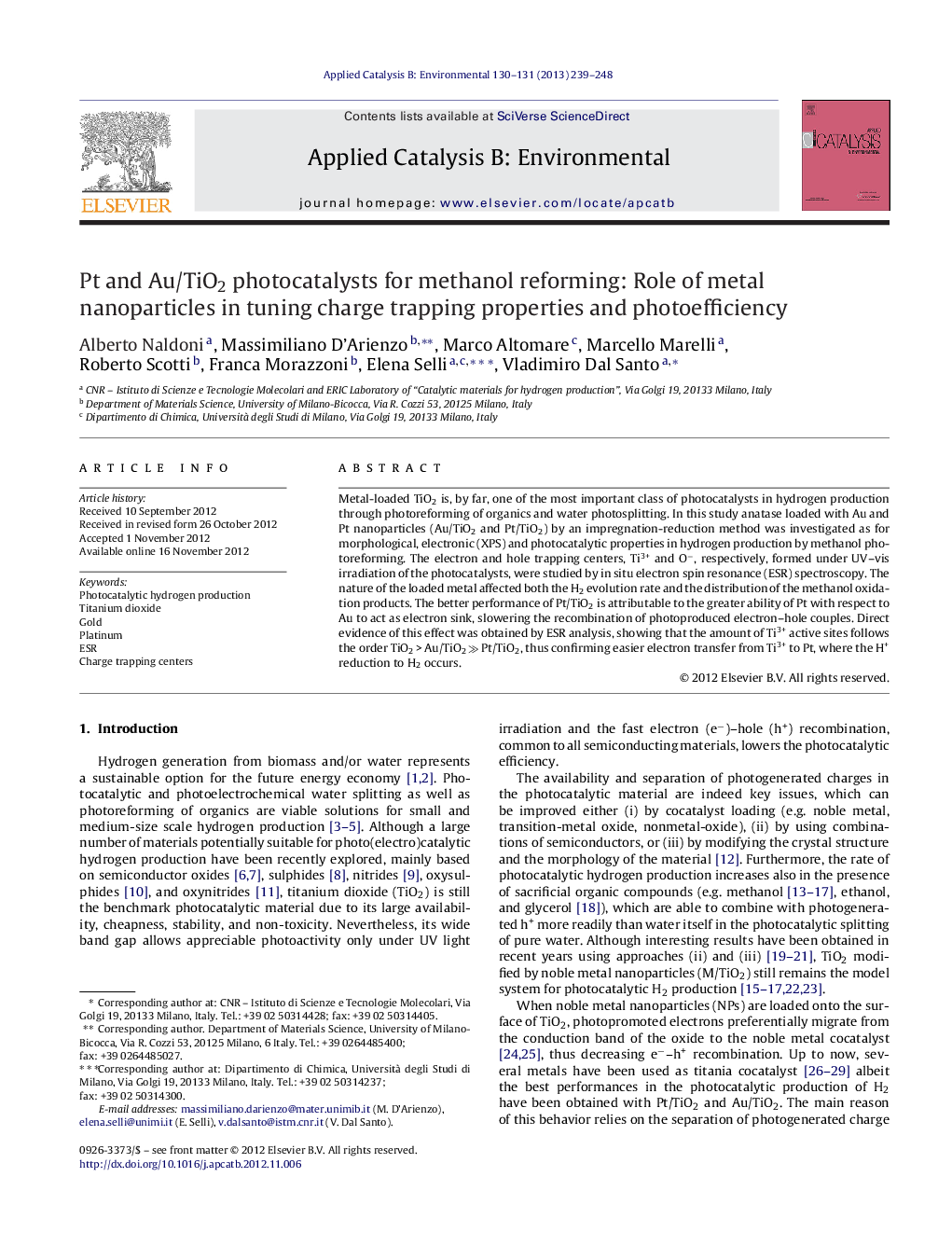| Article ID | Journal | Published Year | Pages | File Type |
|---|---|---|---|---|
| 45834 | Applied Catalysis B: Environmental | 2013 | 10 Pages |
Metal-loaded TiO2 is, by far, one of the most important class of photocatalysts in hydrogen production through photoreforming of organics and water photosplitting. In this study anatase loaded with Au and Pt nanoparticles (Au/TiO2 and Pt/TiO2) by an impregnation-reduction method was investigated as for morphological, electronic (XPS) and photocatalytic properties in hydrogen production by methanol photoreforming. The electron and hole trapping centers, Ti3+ and O−, respectively, formed under UV–vis irradiation of the photocatalysts, were studied by in situ electron spin resonance (ESR) spectroscopy. The nature of the loaded metal affected both the H2 evolution rate and the distribution of the methanol oxidation products. The better performance of Pt/TiO2 is attributable to the greater ability of Pt with respect to Au to act as electron sink, slowering the recombination of photoproduced electron–hole couples. Direct evidence of this effect was obtained by ESR analysis, showing that the amount of Ti3+ active sites follows the order TiO2 > Au/TiO2 ≫ Pt/TiO2, thus confirming easier electron transfer from Ti3+ to Pt, where the H+ reduction to H2 occurs.
Graphical abstractFigure optionsDownload full-size imageDownload as PowerPoint slideHighlights► Pt nanoparticles loaded on TiO2 highly active in hydrogen production. ► Pt nanoparticles loaded on TiO2 highly active in the methanol complete oxidation. ► The amount of electron traps (Ti3+ centers) follows the order TiO2 ≫ Au/TiO2 > Pt/TiO2. ► The amount of hole traps (O− centers) is highest in Pt/TiO2. ► Easier transfer of photopromoted electrons to Pt NPs accounts for higher performance.
